Review: 2025 Royal Enfield Bear 650
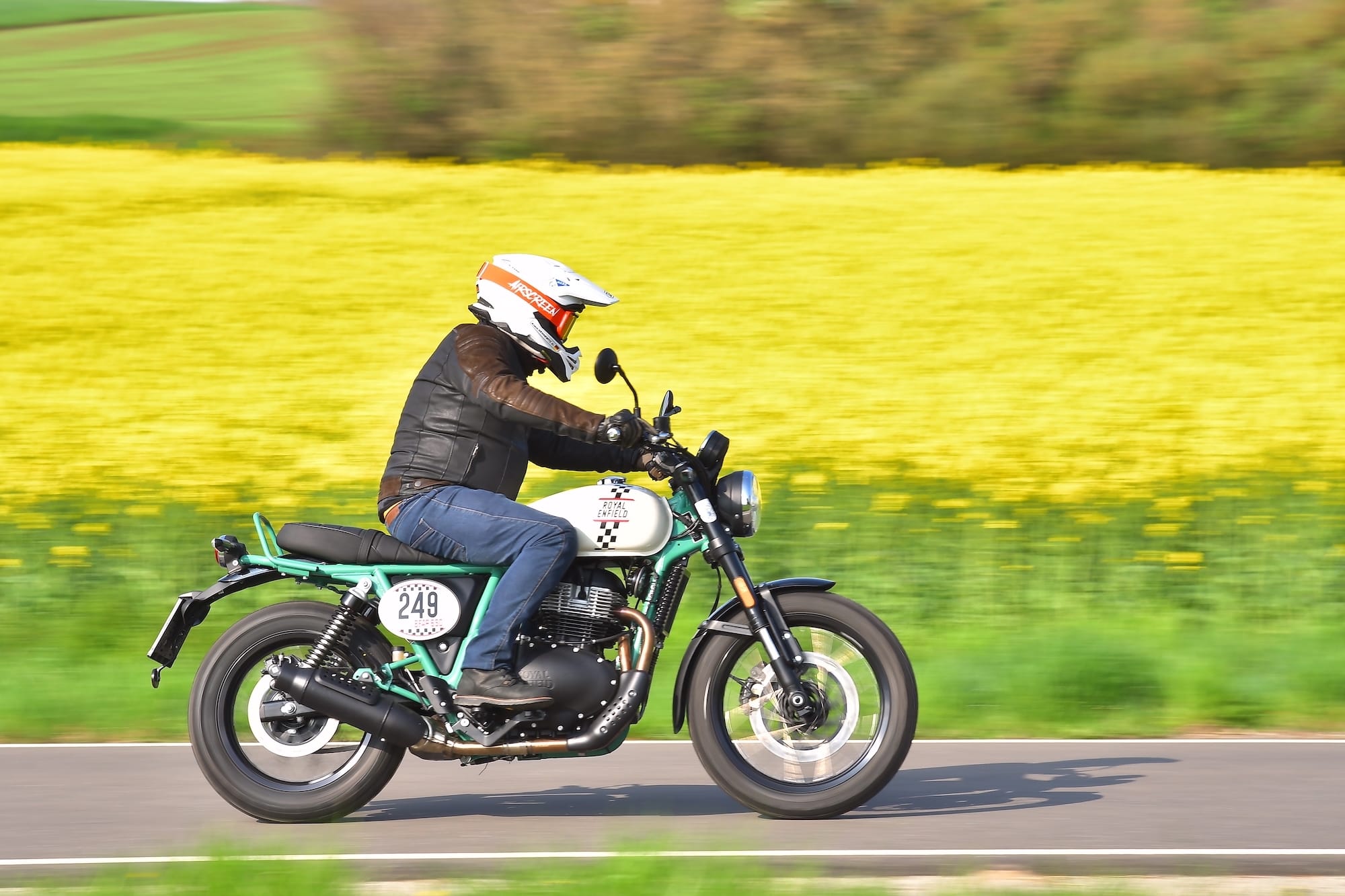
“A motorcycle for Indian markets needs to be made of metal.” That's what Paolo Brovedani, Royal Enfield's now-retired head of research and development, told me when I interviewed him..
If that's the case, then the new Royal Enfield Bear 650 is almost a small revolution, because the front mudguard, side covers, and license plate holder are made of plastic.
The Bear weighs around 451 pounds without fuel, which is still a bit on the heavy side for a 650cc parallel-twin. The Two Four Nine version I tested, with its white tank and turquoise-green steel tube frame, is a real eye-catcher.
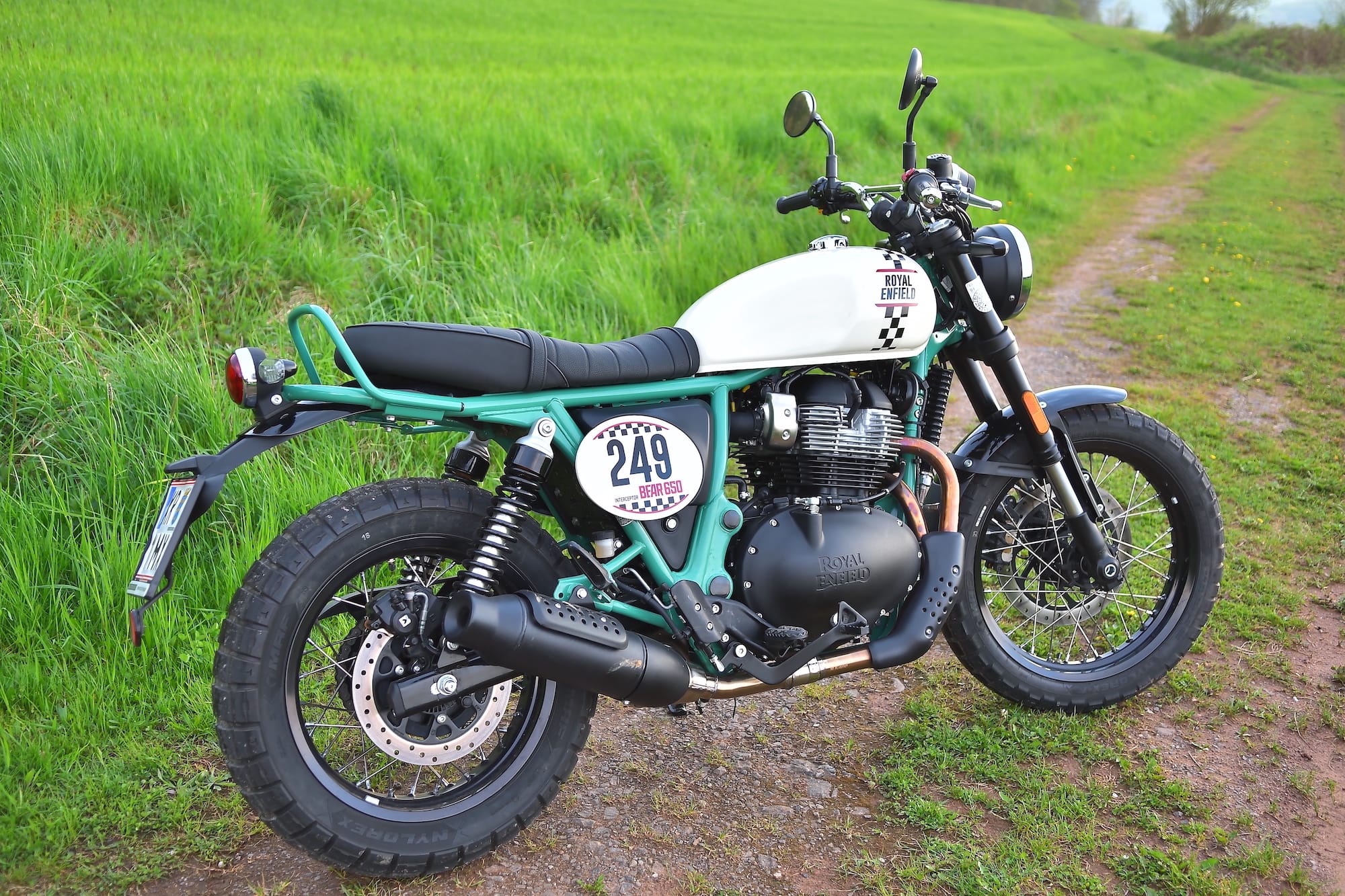
But why the name ‘Bear’ and the number 249 on the side plates? It’s linked to the Big Bear Run, an off-road race that was officially held in California between 1921 and 1963. The race started in Los Angeles and finished 125 to 200 miles later on Big Bear Mountain at an altitude of around 8,200 feet.
In 1960, 16-year-old Eddie Mulder beat 765 other participants on a Royal Enfield Fury 500 single-cylinder machine, with a start number 249. His outstanding performance, despite hair-raising difficulties, earned him the nickname “Fast Eddie” and paved the way for his career as a stuntman.
Smooth and Confidence-inspiring
At first glance, you wouldn't expect this heavy machine to have good off-road capabilities, even though the changes to the 2019 Interceptor from which it derives clearly point in that direction. First of all, there are the new wheel sizes of 19 inches at the front and 17 inches at the rear, fitted with tires from the Indian company MRF (they look very similar to the Pirelli Scorpion Rally STR).
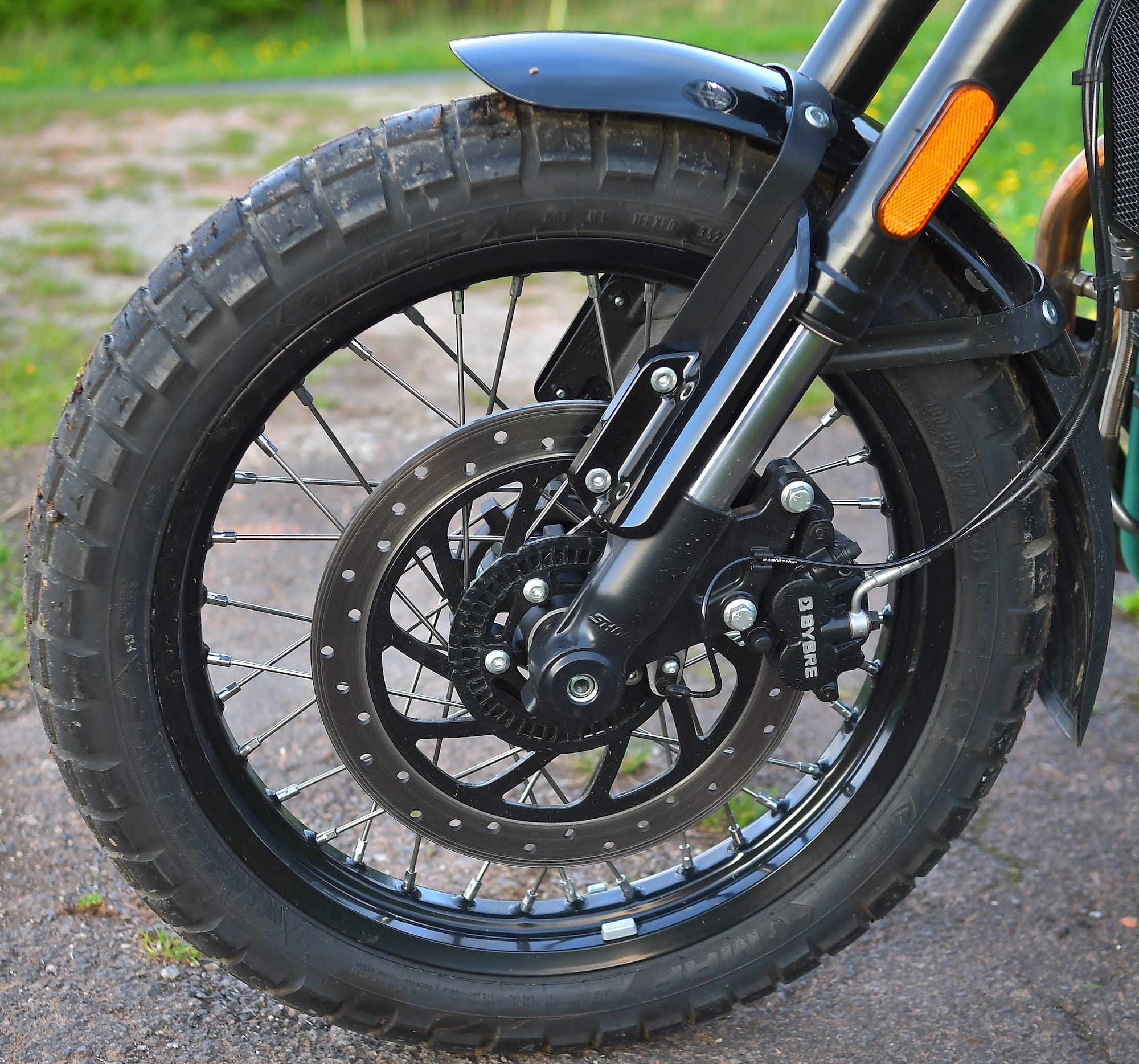
The front wheel is embraced by a Showa upside-down fork with a 43mm tube diameter and 5.1 inches of travel. Meanwhile, the twin shocks on the steel swing arm offer 4.5 inches of travel. These changes increase the seat height to 32.6 inches, and the omission of the left silencer has saved around 4.5 pounds in weight, compared to the Interceptor 650.
In the cylinder head, which looks a bit like an upright BMW two-valve top end, a single camshaft controls the four valves per cylinder. The fuel injection system on the Royal is still controlled by cables, so there’s no ride-by-wire and no riding modes. The rear ABS can be deactivated (when stationary), though.
The Bear 650 felt somehow low and “grounded” at the beginning of my test, with the front wheel conveying a sensational feeling of confidence right from the first corner. I set off for my home loop in an unusual seating position. The long tank means you stretch far forward to reach the downward-angled handlebar ends, and the footrests are positioned relatively far forward.
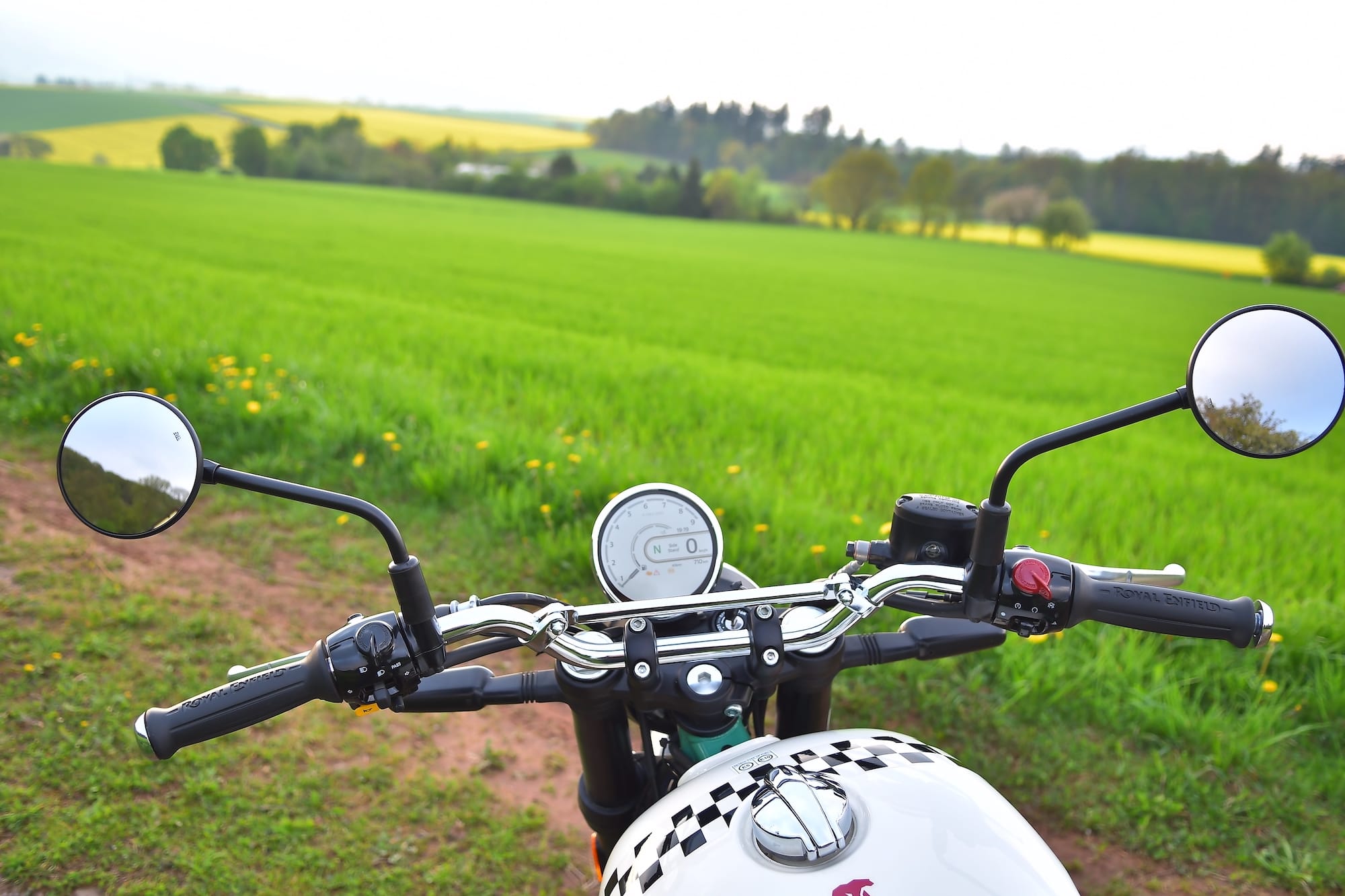
Spontaneously, my thoughts went back to the blissful M-type handlebars of the 1970s as I took the first few corners at speed. I was still waiting for some kind of aha moment, like: “This bike is too heavy, it’s weird to ride, it has bad tires…”
Instead, I soon felt complete confidence in the rock-solid chassis with its completely neutral front end. It was hard to believe that the Bear was fitted with knobby tires, because it handled very precisely and accurately, holding its line in corners right up to the (sufficient) lean angle limit.
The Indian rubber was quite impressive on dry roads, with no noticeable tread squirm even during heavy front braking. The engine, with a 270-degree crankshaft offset and a throaty, resonant sound, also contributed to the exceptionally great riding experience on the road.
At just over 2,000 rpm, the twin pulled smoothly through to the rev limiter at 7,500 rpm, offering a very wide usable torque range that allows you to cruise along country roads without the need to change gears too often. The engine offered plenty of torque even at low revs and didn’t run out of steam at the top end, remaining easy to control at all times.
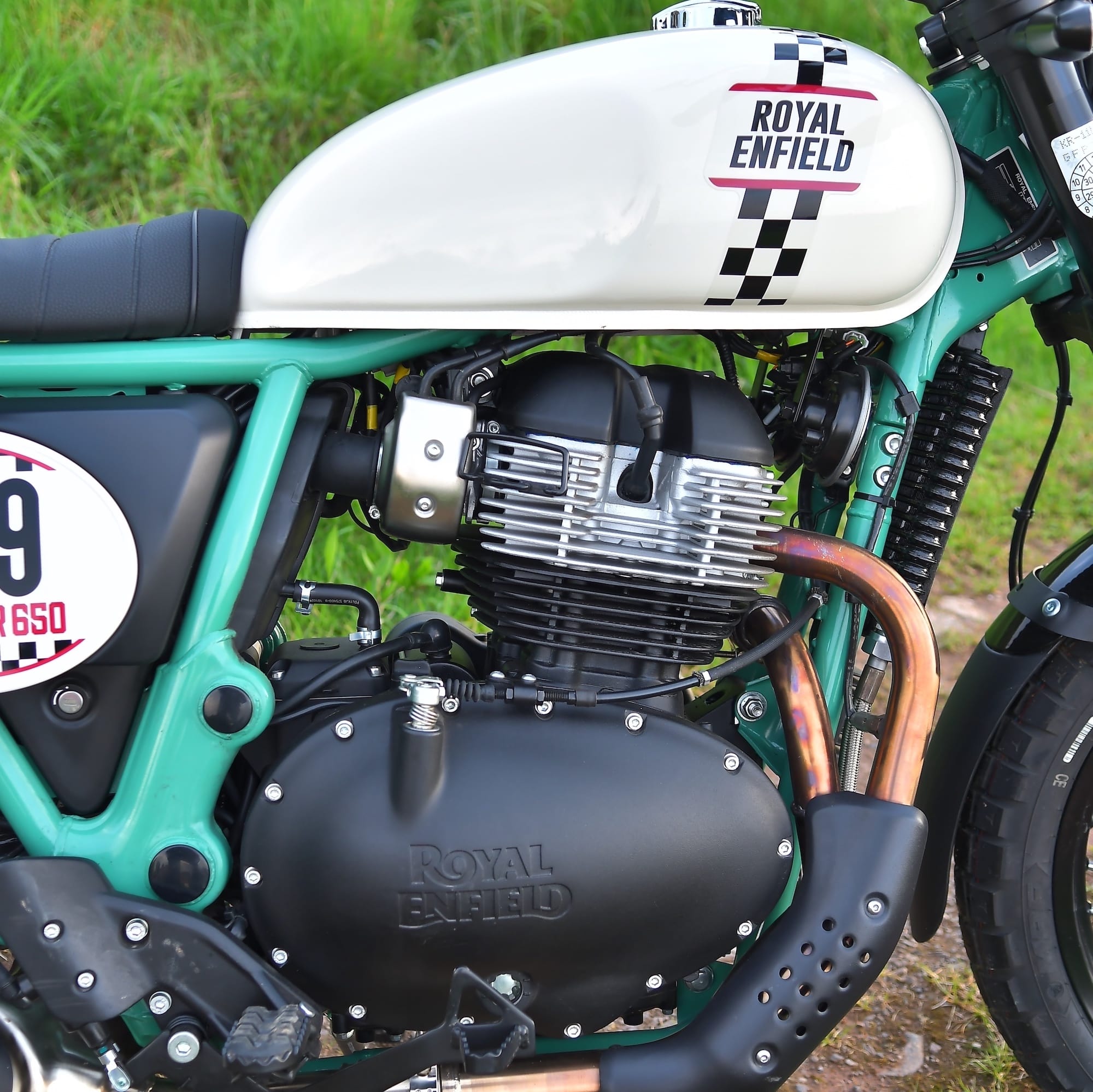
Royal Enfield’s engineers have also done an excellent job in the partial load range and on/off, achieving a sophisticated setup. Some sports bike riders will laugh at the 47 ponies the Bear coughs up, but that's precisely what makes the Royal Enfield so appealing: with less power, you have to ride cleanly and with smooth lines. The chassis is almost perfect for this.
Some Grumbles
That “almost” comes from the twin shocks’ stiff setup, even at the lowest spring preload setting. The R&D department says that this tuning is due to the relatively short spring travel. That's a shame, because other manufacturers achieve very convincing suspension setups with around 4.7 inches at the rear wheel.
While I’m criticizing things, the engine housing is very wide, and the gear lever and foot brake lever are positioned even wider. This forces your legs to spread wide apart, and sometimes it’s difficult to find the right spot immediately, especially on the rear brake lever.
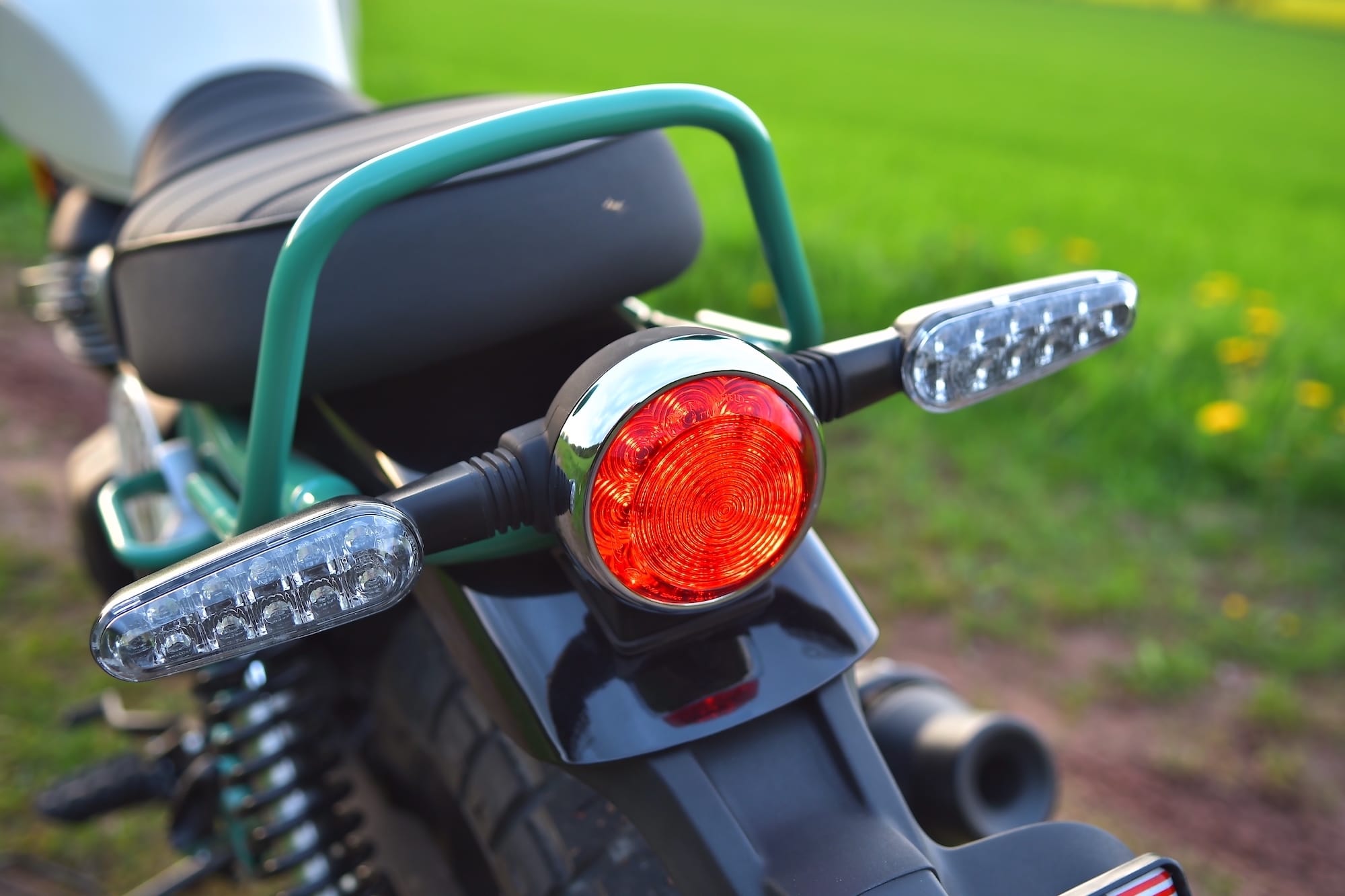
The flat seat, while offering good ergonomics for the rider and passenger, could do with a little more padding.
But apart from that? Everything's fine. The gentle yet dynamic Bear 650 is so much fun to ride that, at the end of the test ride, I found myself adding extra loops so that it wouldn’t end just yet.
When BMW introduced the R 80 G/S in 1980, a German magazine put a headline on its front page: “The best road motorcycle from BMW.” The same thought sprang to my mind when I rode the Royal Enfield. The transformation into a Scrambler has been very successful.
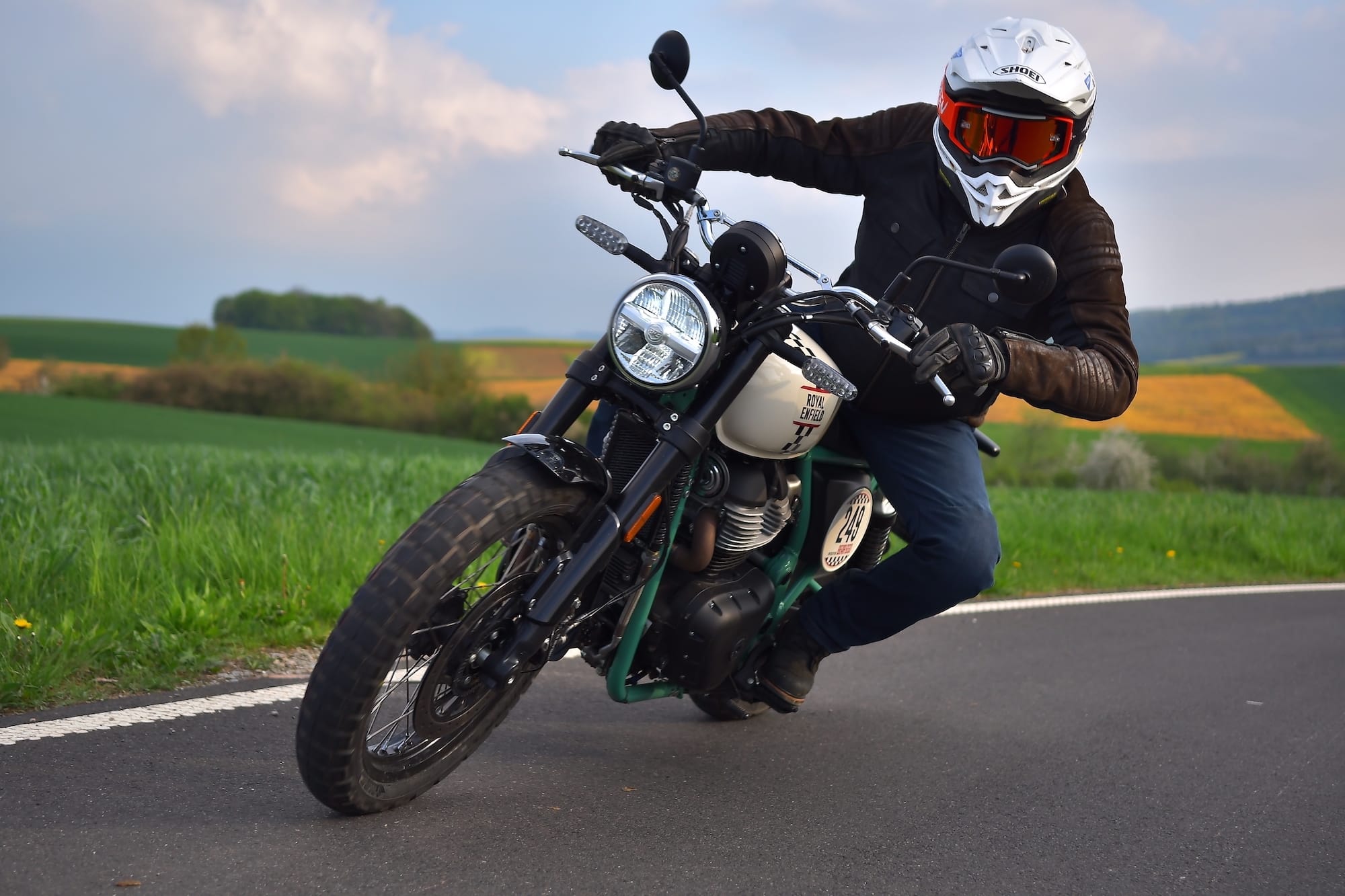
So what is the Bear 650 really capable of doing off-road? Short rides over rough terrain are possible at low speed, but on wet grass, the Indian tires quickly reach their limit, as they do on loose gravel.
But then, at the end of the ride, I was in for a big surprise: a 10-mile-long, legal gravel track through a forest with slightly banked corners. Now the spirit of “Fast Eddie” Mulder was riding along on the Bear, which roared down the track with complete confidence at highway speeds.
It was as if it were racing through California's Mojave Desert up to the summit of Big Bear. What a sporty conclusion to an exciting test ride.
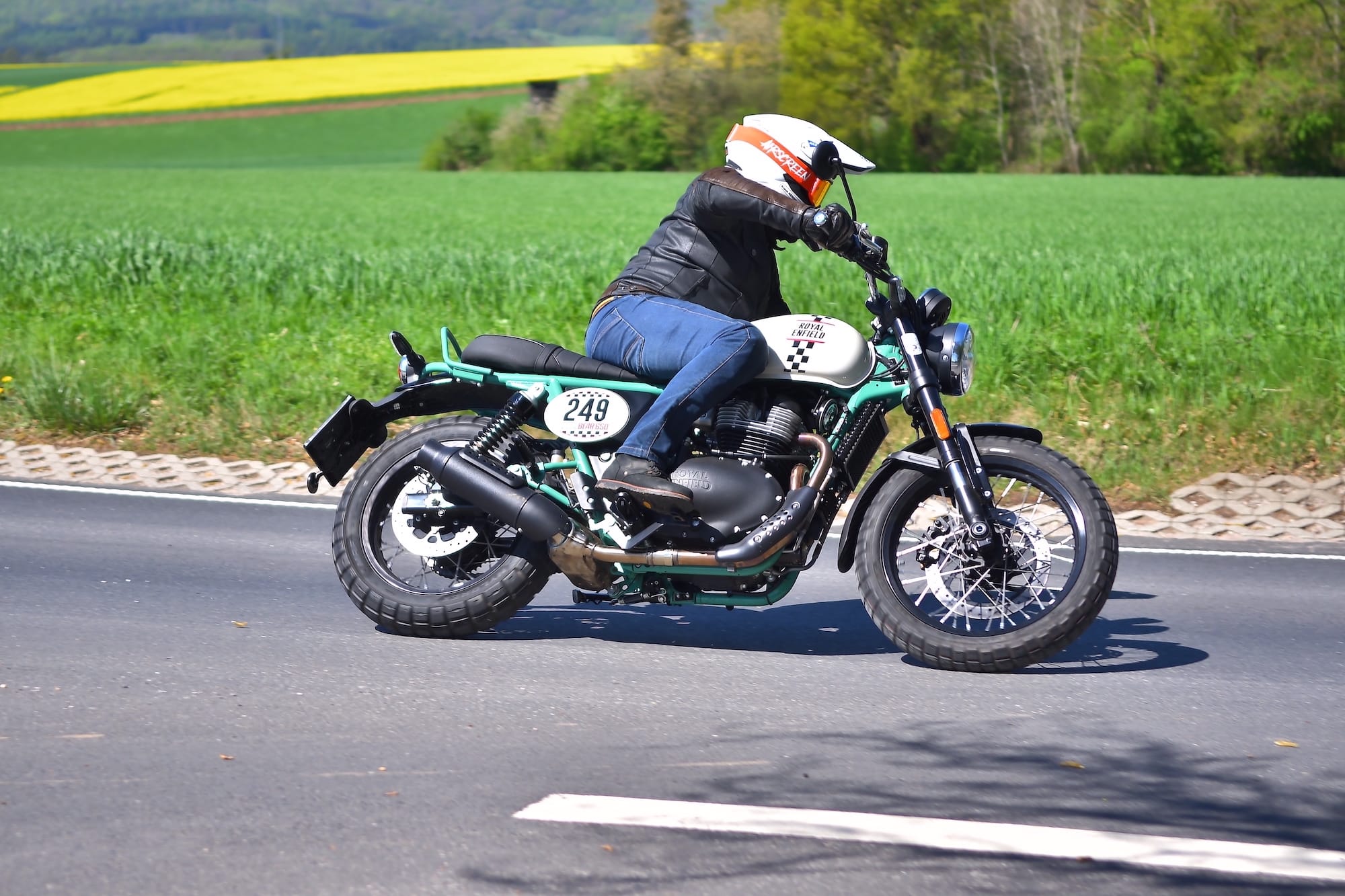
The Royal Enfield Bear 650 is an ingenious road motorcycle with one of the best twin-cylinder engines in the 50 horsepower category. It can handle a bit of off-roading, but its strengths lie on the pavement. The stable chassis and good brakes provide a lot of confidence and safety, putting a permanent smile on the faces of both rider and passenger on winding roads.
Technical Specs
Distributor: Royal Enfield USA
MSRP: $7,199 (Two Four Nine model); $6,849 (base model)
Engine: 270° parallel-twin, 4-stroke, SOHC, air- and oil-cooled, 4-valve
Displacement: 648cc
Power: 64.71hp @7,150rpm; 41.6lb-ft @5,650rpm
Transmission: 6-speed, constant mesh, chain final drive
Rake/Trail: 26.1°/4.6in
Weight (Wet): 471lbs
Seat Height: 32.6in
Fuel Capacity: 3.6gal
Color: Boardwalk White, Petrol Green, Wild Honey, Golden Shadow, Two Four Nine